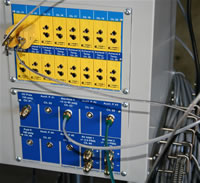 Not sure many out there fully understand what is involved in proper tuning.. Not just the “turn maps up” kind and a quick run on a dyno to get some numbers. If you are lucky they monitored A/F and thats about it.. EGT? nope, Most dynos don’t have enough fan to get near cooling a NA car much less simulating the airflow needed to cool a turbo car. Inertia only you can’t simulate rear world acceleration rates. Did they actually find ideal timing and A/F ratios for this setup? Real tuning takes lots of time on the dyno to get the best for the customer.. The hourly cost of at least $60/hr for a dyno is cheap. We have invested over $50k in the dyno cell alone. My belief here is that by spending for unlimited time upfront we can not be rushed to make the clock. Then it is not the best to “try” on customer cars. So the Business has to invest in development vehicles. Then these cars go to the racetrack and street for long term testing. It is easy to see those that are actually developing and those that are simply copy/paste… Unfortunately just like the china parts usually the copy is pretty good. Looks the same to the short sighted customer. Is it right? Sure shows on the racetrack though. 🙂 Over the years I have witnessed all sorts of tuners on the dyno. Just like anything lots of different methods with varying degrees of success.
Not sure many out there fully understand what is involved in proper tuning.. Not just the “turn maps up” kind and a quick run on a dyno to get some numbers. If you are lucky they monitored A/F and thats about it.. EGT? nope, Most dynos don’t have enough fan to get near cooling a NA car much less simulating the airflow needed to cool a turbo car. Inertia only you can’t simulate rear world acceleration rates. Did they actually find ideal timing and A/F ratios for this setup? Real tuning takes lots of time on the dyno to get the best for the customer.. The hourly cost of at least $60/hr for a dyno is cheap. We have invested over $50k in the dyno cell alone. My belief here is that by spending for unlimited time upfront we can not be rushed to make the clock. Then it is not the best to “try” on customer cars. So the Business has to invest in development vehicles. Then these cars go to the racetrack and street for long term testing. It is easy to see those that are actually developing and those that are simply copy/paste… Unfortunately just like the china parts usually the copy is pretty good. Looks the same to the short sighted customer. Is it right? Sure shows on the racetrack though. 🙂 Over the years I have witnessed all sorts of tuners on the dyno. Just like anything lots of different methods with varying degrees of success.
I recently found this set of articles that takes lots of education and condenses it down to what the everyday driver can understand. Articles From Bilsport/Rototest I encourage everyone to read this that is going to tune their Saab. Maybe you will look a little deeper into the “Development” involved.
If you need a little more then Society Of Automotive Engineers (SAE) Has a good seminar. Lots cheaper now too! Was interesting to see the mathematical side of the motor after learning mostly by the A>B>A testing methods..
Comments? NickT
Hey Nick,
Nice post! Guessing this was partly my fault that you posted this. =P
Thanks for the post!! Do you still have the software to drop in the 9-3 that will work well?
Thanks!!
JD
Whats the custom tunemap give you for power on B205R’s? 205 HOT Aero.
Looking to get mine tuned up, and looking to compare the BSR map to the custom map you created.
Thanks Nick!
Good post, Nick! If I might add to your rant, most tuners have no concept of peak pressure position, ignition delay angle, rapid burn angle, intake port mixture stratification, or transient fuel condensation … all of which change when an engine is tuned.
One which bothers me most is intake port mixture stratification: if you spray all your fuel right onto the intake valves, the only way to keep your true A/F ratio from constantly varying from cycle to cycle is to only spray after the exhaust valve(s) have closed, and stop spraying after the intake valve closes. Otherwise you have a VERY rich mixture waiting at the intake valve to go straight out the exhaust during overlap at some engine speeds, and not at others. Direct injection carries this benefit by necessity, and it is largely responsible for improving the knock threshold by avoiding lean-outs. (even with standard injectors, you can time them to spray after EVC at low IDC to ensure consistent burns, and buy very large injectors for the same effect at full load) A lot of people worry more about getting perfect atomization to ensure low cycle-to-cycle variation, but how effective can that be if it causes an unpredictable air-fuel ratio? (most people also ignore fuel condensation due to rising boost, which is problematic on an intercooled engine, as it requires strangely large amounts of fuel as the boost rises, and the opposite as it drops- T7 has a value for this from the factory, but changes in the intercooler, or intake manifold, in particular can make it hard for the ECU to properly predict the correct value)
Anyway, I suppose there will always be that attitude among people: they don’t care how it works as long as it works. Only when it stops working do they see how that sort of extreme pragmatism can be short-sighted.